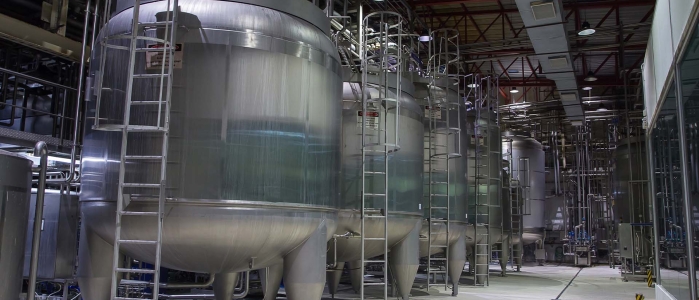Secrets of CIP cleaning stations - how does the cleaning and disinfection process work in the food i
Read also

In today's post, we will delve into the fascinating world of CIP cleaning stations to explain how they work and the cleaning and disinfection process in the food industry. You will learn about the subsequent stages that lead to the perfect cleanliness of machines, devices, and pipeline systems. We invite you to read!
Step 1: Preparing the system for CIP cleaning
The cleaning and disinfection process begins with the proper preparation of the CIP cleaning system. This includes closing the appropriate valves and determining the correct path for cleaning fluids. Depending on the configuration of the plant and its needs, this may also involve determining the appropriate concentration of chemicals and parameters such as temperature or cleaning time.
Step 2: Preliminary cleaning
Preliminary cleaning is the first stage of cleaning, aiming to remove larger contaminants and food residues from machines, devices, and pipelines. Warm water is usually used for this purpose, which is pumped through the CIP system. Preliminary cleaning typically lasts from several to several dozen minutes.
Step 3: Main cleaning
Main cleaning is the stage during which appropriate chemicals are used. Depending on the needs, these can be alkaline, acidic, or neutral agents. The chemicals are dissolved in water and pumped through the CIP system. Main cleaning usually lasts from 10 to 60 minutes, depending on hygiene requirements.
Step 4: Intermediate rinsing
After the main cleaning, intermediate rinsing is performed to remove chemical residues and contaminants from machines, devices, and pipelines. Cold water is usually used for this purpose, which is pumped through the CIP system. Intermediate rinsing typically lasts a few minutes.
Step 5: Disinfection
Disinfection is the next stage, aiming to kill any microorganisms remaining on the surfaces of machines, devices, and pipelines. Disinfectants, such as hydrogen peroxide, sodium hypochlorite, or organic acids, are used for this purpose. The disinfectants are dissolved in water and pumped through the CIP system. Disinfection time can range from several minutes to several dozen minutes, depending on hygiene requirements.
Step 6: Final rinsing
The final stage of the cleaning and disinfection process at the CIP station is the final rinse. Cold water is used for this purpose, which is pumped through the CIP system to remove residues of disinfectants and other contaminants. Final rinsing typically lasts a few minutes.
Step 7: Restoring the system to normal operation
After cleaning and disinfection, the CIP system is restored to normal operation. This includes opening the appropriate valves, restarting machines and devices, and checking for any damages during the CIP process.
In conclusion, the cleaning and disinfection process in the CIP station consists of several stages aimed at maintaining hygiene and safety in food industry plants. Thanks to the automatic and precise operation of CIP cleaning stations, the risk of contamination, bacteria, or mold is minimized, affecting the high quality and safety of produced food items. It's worth investing in the right CIP cleaning station to ensure effective and efficient cleanliness maintenance in a food industry plant.
Read more about CIP Cleaning Stations on our website - CLICK
